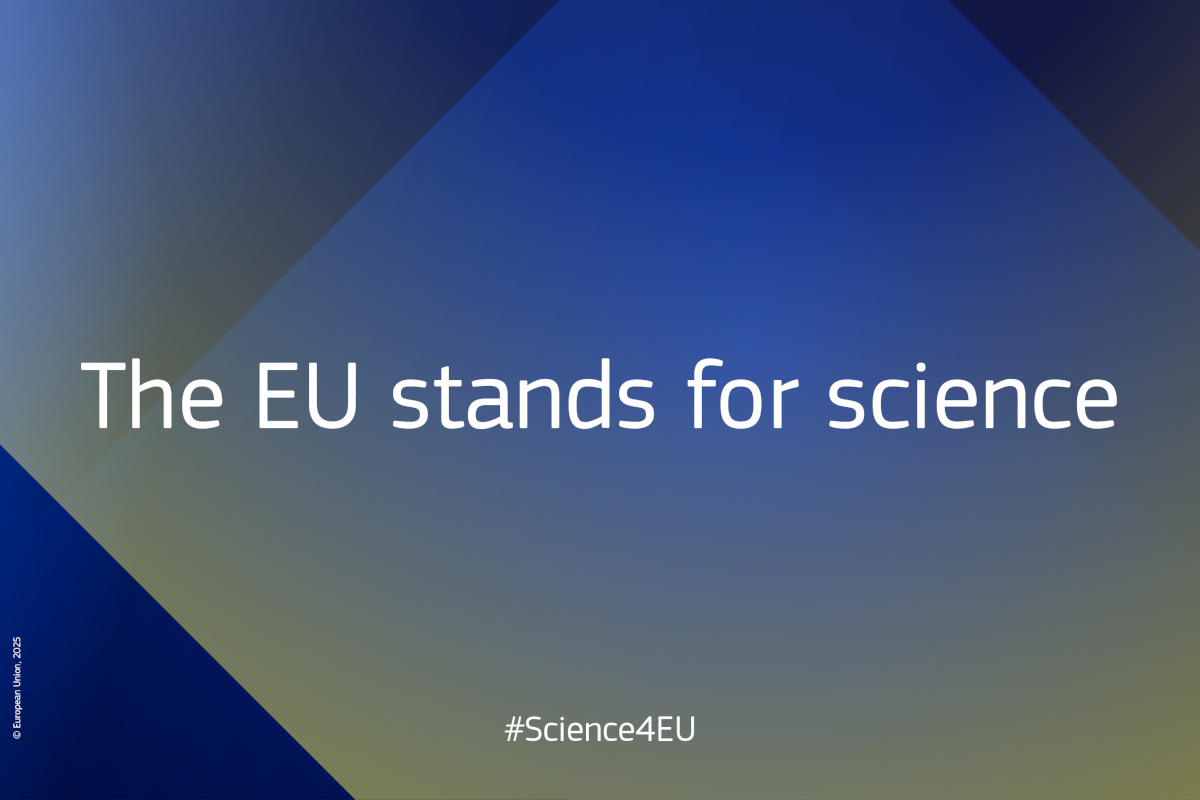With support from EU-funded researchers, farmers across Europe are adopting smarter and better integrated pest management that protects crops and cuts chemicals - without cutting profits.
Special series

Science4EU
The Science4EU campaign shows how the EU stands for science. It shines a spotlight on the scientists, researchers, and innovators working with EU support to improve our lives and shape a better future for everyone.
Do you also stand for science?
Podcast
Media AV Portal Audio
More stories

This year’s EU Contest for Young Scientists showcased hard science with a social edge, with young scientists presenting innovations ranging from robot turtles to quantum discoveries.
Most popular
-
1
-
2By Sofia Sanchez Manzanaro
-
3
-
4By Jonathan O’Callaghan
-
5
Top videos
Eyes in the sky: making Earth observation data work for people
8 October 2025
New telescope cuts through space noise in hunt for distant Earth-like worlds
3 October 2025
Past articles
When, as a 16-year-old, Adam Noble began measuring nanosilver pollution in his local river, he could hardly have foreseen that it would make him CEO of a 40-strong company before his 24th birthday.
New portraits of the evolution of some of history’s deadliest pandemics have been created through analysis of thousands of skeletons and new collections of historical photographs - and the results could indicate how similar diseases may evolve in the future.
Genes and adverse childhood experiences could result in a hyperalert brain that is good at being ready for action but gives rise to insomnia in later life, according to Professor Eus Van Someren, a sleep expert at the Netherlands Institute for Neuroscience. He is investigating the link between insomnia and depression and has discovered a strong genetic correlation among the two conditions.
The first full-length mainstream music album co-written with the help of artificial intelligence (AI) was released on 12 January and experts believe that the science behind it could lead to a whole new style of music composition.
An environmentally friendly coffee machine and a way to turn used coffee grounds into a new type of ink are helping to increase the green credentials of one of the most popular beverages in the world.
Few would be surprised to learn that the sun is very, very hot. At its surface, the temperature is several thousand degrees Celsius.
Reducing the trauma associated with bad memories while someone is asleep sounds like the stuff of science fiction, but it could become a reality in 10 years thanks to a greater understanding of how the brain encodes memories during sleep.
A relatively inexpensive egg-based formula and a Star Trek-like plasma patch can accelerate healing of serious and chronic wounds, which affect millions of Europeans every year.
A cereal bar that keeps diabetes at bay is one example of how we could prevent disease by adding short molecules known as peptides into what we eat, says Dr Nora Khaldi, founder of Nuritas, which is using artificial intelligence (AI) to identify new peptides and create foods with health benefits.
For something that can occupy such a significant chunk of time, sleep still remains a mysterious part of our lives. Although it is known to play a role in mental and physical health, such as metabolism and memory, there is much that is still not well understood.
Even though we all spend about a third of our lives asleep, there's still plenty left for us to learn about the science of sleep. This month, Horizon looks at the importance of shuteye for our physical and mental health, and how sleep-deprived brains may be both awake and asleep at the same time. Plus, we investigate what exactly drives us to sleep and wake up, the effects of insomnia, and how the way our bodies use sleep to form memories is inspiring scientists to discover ways to improve our brains.
The search for alien life with next-generation telescopes, a self-healing heart capable of restarting itself, and safer roads with smarter cars are expected to feature as the some of the key scientific breakthroughs in the coming year.
From rubber dandelions and toxic crustaceans to anti-vaxxers and the world’s hottest geothermal well, Horizon covered a wide variety of stories in 2017. Here are our 10 favourite science facts that we learned along the way.
Picture the humanitarian aid sector and you don’t immediately think of start-up accelerators and hackathons. But aid agencies are co-opting these tools of innovation to help solve global issues – and a new EUR 5 million prize from the EU is designed to boost this even further.
A new filtration system that uses natural molecules to remove hormone-affecting chemicals from wastewater has succeeded in trapping 95 % of these substances before the water goes back into the environment.
Decades of scientific research into areas including plant genetics and data science helped doctors successfully carry out an experimental therapy to create a new skin for a seven-year-old boy suffering from a rare genetic disorder.
Rising populations and climate change are putting pressure on the water needed for agriculture but a solar-powered irrigation system may reduce the amount that farmers use – while simultaneously slashing the sector’s greenhouse gas emissions.
Glasses that translate images of physical objects into soundscapes and a belt that turns images into vibrations are helping blind people build up a real-time 3D picture of the world around them, and the technology could hit the market as soon as next year.
Hormonal disorders can affect people's immune systems, metabolism and even bones, and unravelling the mystery around something called ultradian rhythms could help improve diagnosis and lead to better treatments, according to Professor Eystein Sverre Husebye, who works at the Department of Clinical Science at the University of Bergen (UiB) in Norway.
People will need to be persuaded to eat new types of seafood if we are to extract more food from the oceans and feed growing human populations, according to fishing industry experts.






























